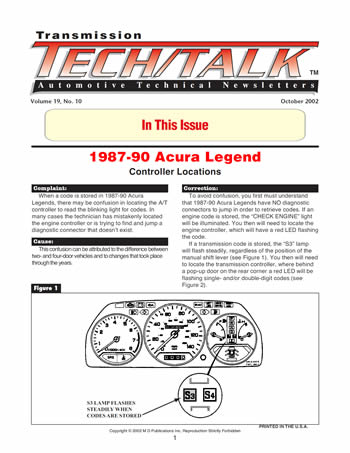It’s a Game of Tag, and You’re It!
In many instances, during the repair process it is necessary for us to disconnect the battery or the computer. Sometimes this is all it takes to create a problem in the vehicle that was not there before.
Let’s take a look at some of these “disconnect”-related problems and how to correct them should this happen to you.

Code 47/633 in E4OD/4R100
Many technicians are familiar with the problem of early shift scheduling on the 4L80-E transmission. This prob¬lem is caused by a 4×4 low range signal being sent to the computer at an inappropriate time. Vehicles equipped with the E4OD/4R100 transmission may also have this type of problem. A code 47/633 is usually your first clue in identifying this condition. Since Ford uses the same wiring harness in both 4-wheel drive and 2-wheel drive vehicles, you may find code 47/633 in both types of vehicles.

A Case of Hide and Seek
One of the many automotive animals that technicians have to wrestle with is finding the definitions for the ever-increasing number of diagnostic codes. And then, of course, their definitions are being represented by a seemingly endless list of acronyms associated with that code. TCC, VSS and TPS are just a few recognizable acronyms in our industry today.

Handling 6-Speed Heavyweights
The present trend toward larger and heavier-duty pickups has now brought the ZF S6-650 6-speed manual gearbox onto the scene. This 6-speed transmission was introduced in 1999 in the Ford F 250, F 350, F 450, F 550 and stripped-chassis models. It has been used behind diesel engines from 1999 to current production and behind gasoline engines starting in 2002 models. GM adopted the S6-650 transmission for use in its 2500 and 3500 heavy-duty pickups behind both gas and diesel engines in the 2001 model year.

October 2002 Issue
In This Issue
1987-90 Acura Legend: Controller Locations
When a code is stored in 1987-90 Acura Legends, there may be confusion in locating the A/T controller to read the blinking light for codes. In many cases the technician has mistakenly located the engine controller or is trying to find and jump a diagnostic connector that doesn’t exist.

